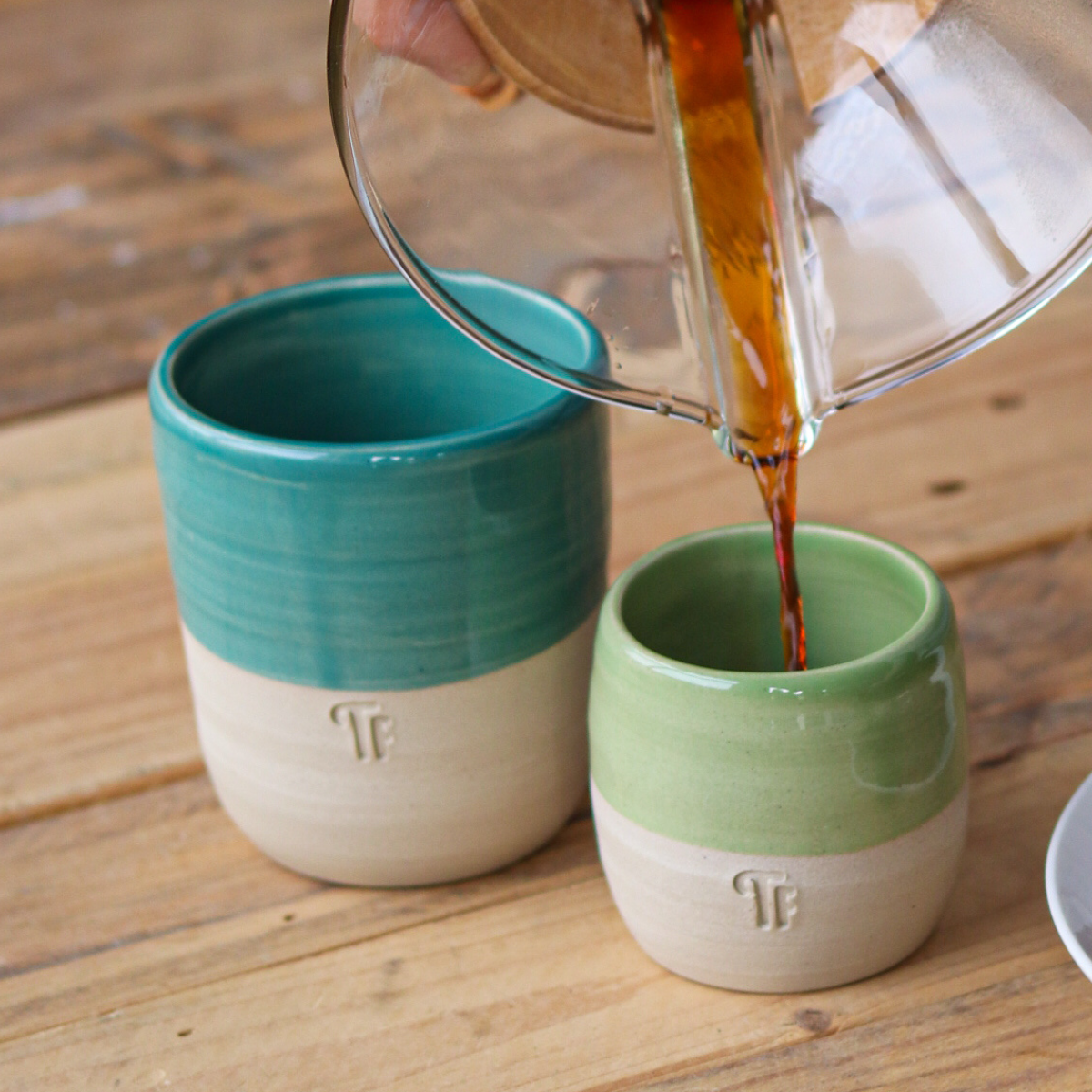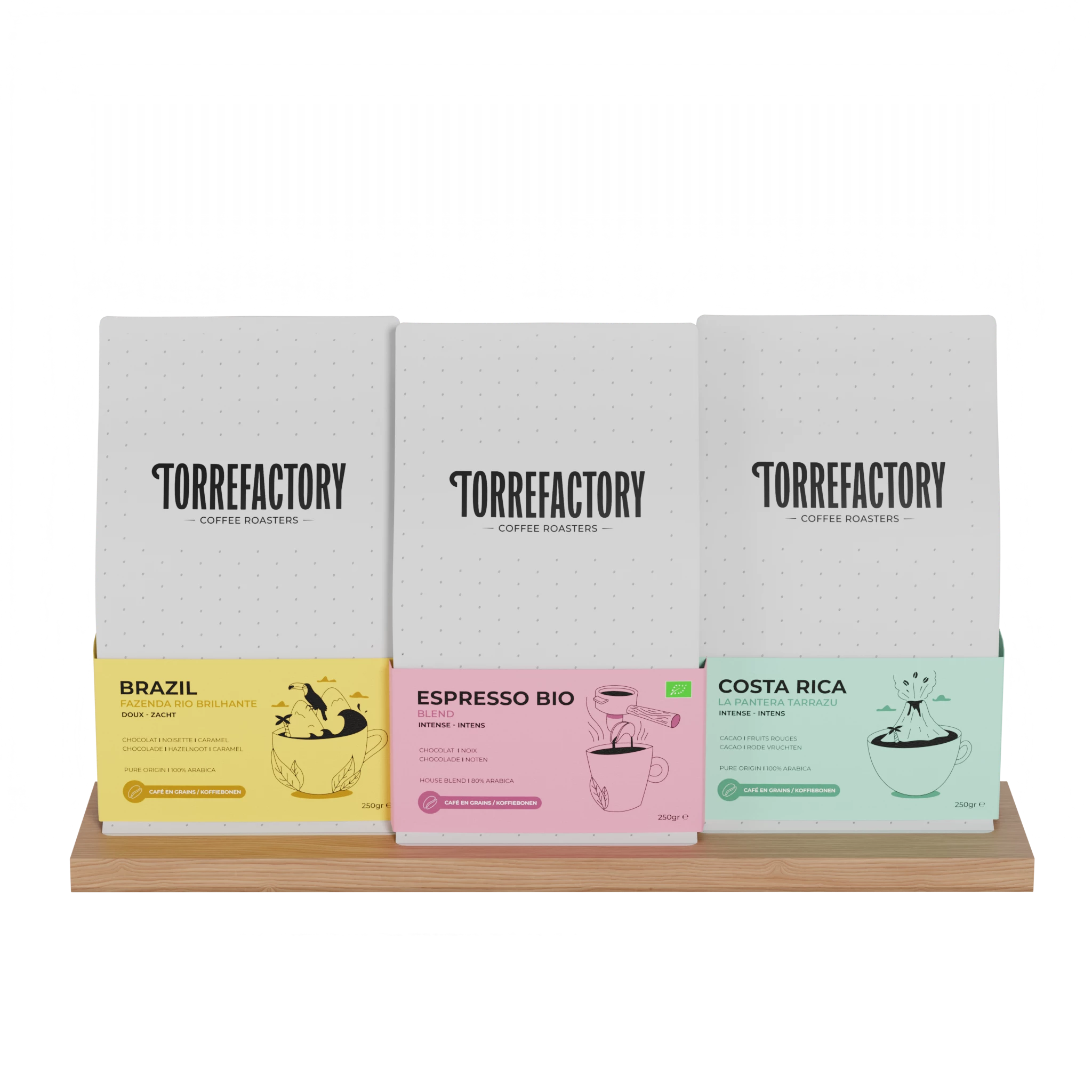Coffee beans
The history of Torrefactory coffee beans
There are four types of coffee bean, but only two are in sustained production: Arabica and Robusta. Excelsa and liberica, on the other hand, grow at low altitudes and have a distinctive taste profile. Although appreciated by some, excelsa and liberica coffees are exported in small quantities. The main reason for this is their caffeine content, which is two to three times higher than that of Arabica.

According to the International Coffee Organization, 62% of coffee exports in 2022 will be Arabica, compared with 37% Robusta. This strong preference for Arabica is not without reason: there are hundreds of varieties with notes as delicate as they are complex. The personality of this coffee lies in its terroir and the care taken in its cultivation. Robusta coffee, which grows at low altitude, has a pronounced, rather bitter taste.
Did you know that robusta coffee was first commercialized by a Belgian? Lucien Linden presented it at the 1900 Universal Exhibition in Paris. This coffee variety was a welcome alternative to wild Arabica coffee trees, almost entirely decimated by a fungus to which the aptly named robusta was resistant.
How to choose the best coffee beans?
As you may have noticed, the choice of a good coffee bean is a matter of geographical location. The higher the altitude, the more subtle the beverage. You can consider coffee beans grown at altitudes of 900 metres or more to be worth your while. This doesn't mean you should ban low-altitude coffees from your cupboards. They display floral and spicy notes, as well as hints of chocolate and caramel. Mouth-watering, we agree.
In the end, it's in the tasting that everything is confirmed. Find out more about the characteristics of different coffee beans, read reviews and then give them a try. You'll find a description of each type of coffee bean on our website.
Single-origin coffee beans
Coffee lovers, we invite you to discover our pure-origin coffee beans. If the coffee blends skilfully studied by our master roaster offer a magical moment at the heart of the secrets of our know-how, coffee beans from a single origin allow you to fully appreciate the characteristics of each terroir.
Taste the ripe fruit of Colombia, the chocolate-nut delights of Costa Rica (with or without a brownie square!) or the spicy roundness of Mexican coffee beans from the Torrefactory range.
There are around 800 coffee aromas, specific to the terroir and revealed by the right roasting. Your taste buds will be hard-pressed to detect the notes that emanate from your favorite beverage. At Torrefactory, we want to share our passion for the flavors inherent in every culture.
How to store your coffee beans?
Our sachets are designed to keep your coffee beans dry and protected from light. After resealing your coffee bag, place it away from temperature variations to preserve its aromas. You can also transfer your coffee beans to an airtight, dry container.
If you have an automatic coffee machine, these are usually fitted with a seal and sometimes even UV filters, if your machine is exposed to the sun's rays.
Our sachets will give you complete satisfaction for several weeks. Although it's possible to store coffee beans for months and months, you should be aware that they lose much of their aroma over the weeks. This doesn't make them unfit for consumption, just less effective.
Our additional information on coffee beans :
- The art of the quality coffee bean: from cherry to perfect bean
- On the trail of the Torrefactory coffee bean pack
- Coffee bean roasting : an art at the heart of international competitions

 Coffees.
Coffees.  Boxes.
Boxes.  Slow Coffee.
Slow Coffee.  Teas.
Teas.  Machines.
Machines. 
 B Corp.
B Corp.  Vision.
Vision.  TF.
TF.  Points of sale.
Points of sale. 

